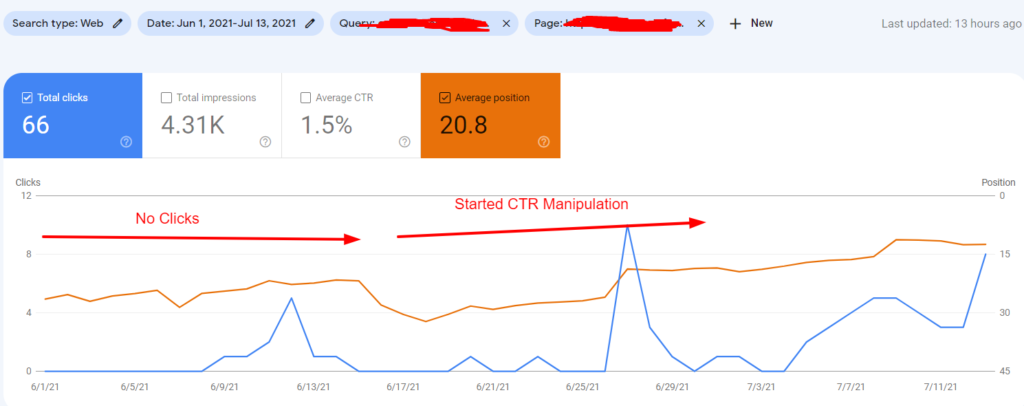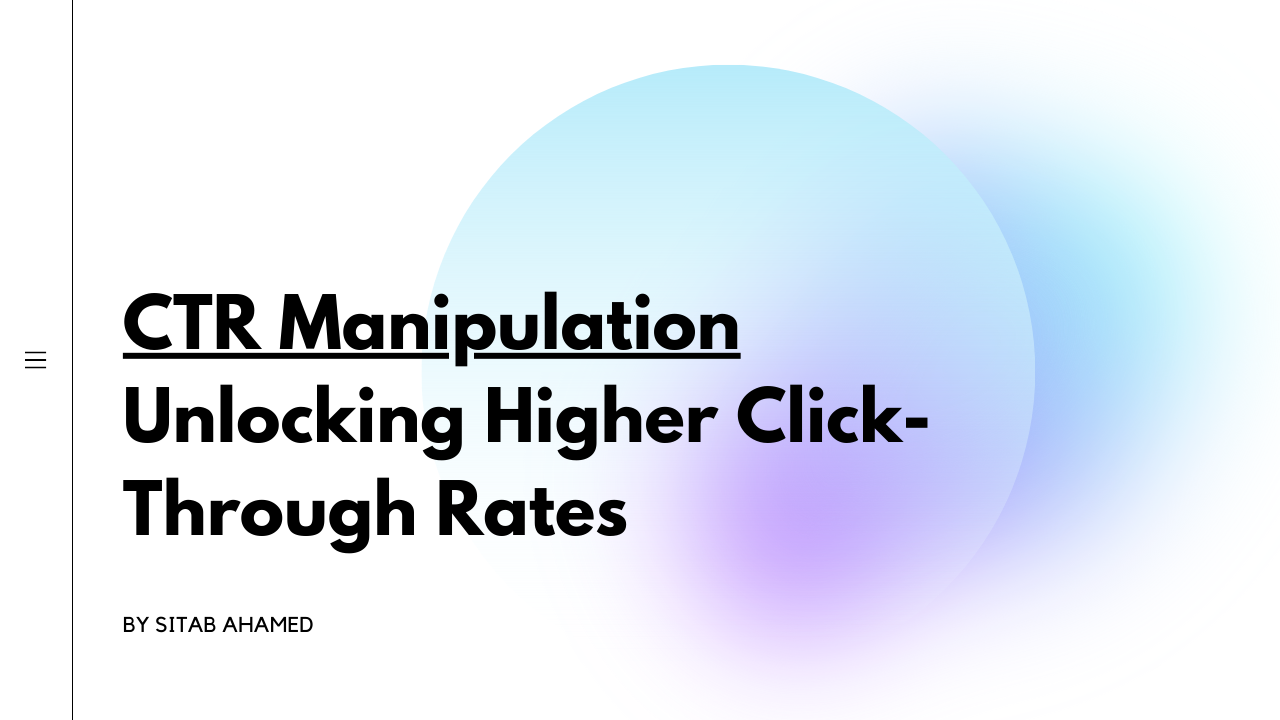GMB CTR Manipulation-- Maximize Your Local Search Visibility with CTR Solutions
CTR Manipulation: A Game Changer for Digital Campaigns
The rise of CTR control has actually undeniably transformed electronic advertising strategies, offering marketing experts with tools to boost engagement and drive web traffic effectively. What implications might this stabilizing act hold for the future of digital campaigns?
Comprehending CTR Adjustment
Although click-through price (CTR) adjustment might look like a simple tactic in digital advertising, it incorporates a variety of strategies targeted at synthetically blowing up involvement metrics. This manipulation can take numerous forms, including the usage of click ranches, bots, or misleading advertisement positionings that misinform customers right into clicking. These techniques can jeopardize the honesty of efficiency information, making it testing for marketing professionals to determine the real efficiency of their campaigns.
Additionally, CTR control raises honest worries, as it undermines the transparency of digital marketing. The reliance on inflated metrics can result in misguided advertising choices, skewing source allocation and project methods. Services may invest heavily in networks and methods that show up successful yet do not produce real interaction or conversions.

Benefits of Click-Through Price Optimization
Maximizing click-through rate (CTR) is essential for boosting the performance of electronic advertising projects. A greater CTR suggests that a larger percentage of users are involving with the material, which can lead to raised web site traffic and far better conversion rates. By boosting CTR, brands can effectively designate their marketing sources to initiatives that produce the greatest returns.
Among the primary advantages of CTR optimization is the capacity for improved advertisement placement and reduced expenses - CTR Manipulation. Systems like Google Ads compensate higher CTRs with better ad positioning and minimized cost-per-click (CPC), permitting online marketers to stretch their spending plans further. Furthermore, a well-optimized CTR can enhance brand name presence, as higher interaction rates usually associate with boosted organic reach

Strategies for Effective CTR Control
To properly adjust click-through rates (CTR), marketing professionals can utilize a selection of tactical methods that boost user engagement and drive web traffic. One essential strategy is optimizing advertisement copy to develop compelling and action-oriented language. CTR Manipulation. Using solid call-to-action (CTA) expressions encourages users to take immediate action, boosting the chance of clicks
Another effective technique is A/B testing, which allows marketing professionals to contrast various Go Here advertisement variants. By methodically assessing efficiency metrics, they can recognize which elements reverberate ideal with the target market, thereby refining their strategies for optimal influence. In addition, leveraging aesthetically enticing graphics and succinct messaging can catch interest quickly, making it much more possible that users will involve.

Lastly, maximizing touchdown web pages to make sure a seamless individual experience can decrease bounce rates and urge more communication, eventually promoting higher CTR. By incorporating these strategies, marketing experts can properly adjust CTR to accomplish their project goals.
Determining Success in Digital Campaigns
Gauging success in digital campaigns calls for a clear understanding of crucial performance indicators (KPIs) that straighten with project goals. KPIs serve as measurable metrics that aid analyze the performance of various approaches used throughout the campaign. Usual KPIs consist of click-through rates (CTR), conversion prices, cost per procurement (CERTIFIED PUBLIC ACCOUNTANT), and return on financial investment (ROI)
To efficiently measure success, it is critical to establish particular, measurable objectives first of the project. For instance, if the primary purpose is to enhance brand name understanding, metrics such as impressions and involvement rates check my site might be focused on. In contrast, campaigns concentrated on direct sales would take advantage of a more in-depth evaluation of conversion rates and earnings generated.
Normal analysis of these KPIs makes it possible for marketing professionals to make data-driven decisions, optimizing their methods in real-time. Using analytical devices can aid in tracking efficiency and identifying fads, enabling speedy modifications to enhance project outcomes. Eventually, a thorough approach to measuring success not only highlights areas for renovation but also strengthens the total effectiveness of electronic advertising and marketing efforts, driving sustained development and interaction in the lengthy term.
Future Patterns in Digital Advertising And Marketing
Anticipating the future of digital advertising reveals a landscape shaped by quick technological innovations and transforming customer habits. As synthetic intelligence and artificial intelligence proceed to progress, marketers will significantly take advantage of these modern technologies to customize projects at an unprecedented scale. Anticipating analytics will certainly allow brands to prepare for customer requirements, maximizing advertisement placements and content shipment in real time.
Moreover, the surge of voice search and wise tools is changing exactly how customers interact with digital web content. Marketing experts will require to adapt their methods to make certain visibility throughout several systems, including voice-activated assistants. This change requires a focus on conversational advertising, stressing involvement with discussion as opposed to traditional promotional methods.
Additionally, personal privacy concerns are triggering changes in information collection practices. Transparency and moral data usage will certainly become critical, driving brands to cultivate trust and commitment amongst customers. The recurring development of social media platforms will likewise affect advertising and marketing strategies, with a heightened emphasis on authenticity and user-generated material.
Conclusion
In recap, CTR control represents a considerable development in electronic advertising strategies, using instant benefits via boosted involvement metrics. Nevertheless, the moral considerations surrounding such techniques require a careful technique pop over to these guys to guarantee long-lasting brand name honesty and authentic target market connection. By striking a balance in between optimization strategies and authentic interaction, marketing experts can cultivate sustainable relationships with consumers. The recurring development of electronic advertising will depend on this fragile interplay, forming the future landscape of brand-consumer interactions.